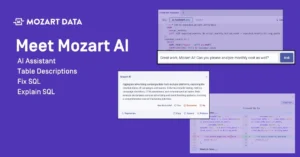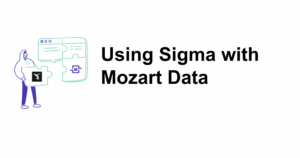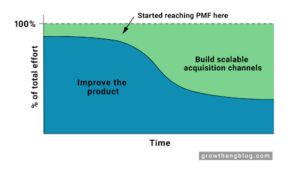TL;DR:
- A modern data platform is a suite of software that helps organizations process and manage large volumes of data quickly and efficiently.
- It includes the core components of the modern data stack: ETL, data warehousing, a data transformation layer, and a business intelligence tool.
- The modern data platform expands on the core components by adding capabilities like data pipeline visualization, automation, data observability, data cataloging, and data reliability.
- These additional tools are essential for improving data management, automation, and decision-making processes.
- Companies like Mozart provide an all-in-one solution for setting up a modern data platform, which includes automated data pipeline, data observability, data cataloging, and data reliability features.
It’s easy to get confused by the latest flurry of tech-related buzzwords, which can make it hard to keep up with new advancements and the latest trends. So we want to take a step back and clearly define some terms and explain concepts related to modern data platform architecture. This will help you not only understand the various data platform tools, but also how a data platform as a service is helping companies become more efficient and better utilize their proprietary information to support business objectives.
What is a data stack?
A data stack, sometimes also referred to as a data platform, consists of a set of tools that enable a business to centralize the data it collects from disparate sources, clean and transform the data to make it analysis-ready, and perform actual analysis and data visualization.
The platform’s core components include ETL (extract, transform, load), data warehousing, a data transformation layer, and a business intelligence tool. Here’s how these data platform tools work together:
ETL
ETL tools help move and start organizing data to a central repository (the data warehouse). Connectors first extract data from its origin source, such as a CRM, email marketing tool, production database, or payments solution. If desired, an ETL tool can then clean and transform the raw data to remove flaws, such as duplicates and incomplete data, and fix formats that differ among platforms. This step prepares data for analysis. Finally, cleaned data sets are organized in a data warehouse.
Data warehousing
A data warehouse serves as a company’s single source of truth, as it is the central repository for every line of up-to-date, clean data. Data in a warehouse can be additional transformed or queried. Other tools, such as machine learning (ML) tools or party pipeline visualization and scheduling tools, can also be “layered” onto the data warehouse. It’s often helpful to think of the data warehouse as the center of the data ecosystem a company assembles.
Data transformation layer
This tool is not to be confused with an ETL tool. A data transformation layer is an additional tool that is used to query the data that is stored in the data warehouse and then validate and transform the data for use in a business intelligence tool.
A common use of a data transformation layer would be to create a new table in a data warehouse combining data from multiple sources, so users can answer more complicated questions than would be answered with a single data source. For example, if a SaaS company wanted to pair product usage data with campaign data or payments data (or both!) to identify where strong customers come from and the actions they take inside the product, they would use a data transformation tool to prepare data from those disparate sources for analysis.
Business Intelligence Tool
A business intelligence tool sits at the end of the data pipeline to enable a business to use its clean data for reporting, visualizations, and analysis. This tool is usually purchased separately from other pieces of the modern data stack, although some out-of-the-box or all-in-one platforms like Mozart Data provide a business intelligence option.
What is the modern data platform?
If the core components of a data stack are ETL, data warehousing, a data transformation layer, and a business intelligence tool, then what is the modern data platform?
As technical functionality evolves, the modern data platform continues to expand on the basic toolset and add capabilities beyond the aforementioned core components. Mozart’s modern data platform, for example, also data pipeline visualization and automation, data observability, data cataloging, data reliability, and data alerting features. When these tools are integrated and function together in a platform, they provide an all-in-one data management solution.
You may be wondering whether you need these additional tools. The answer is yes; it’s best practice to incorporate them into your data strategy. Let’s review their function to understand why.
Automated Data Pipeline
Without automation, high-value employees are doing labor-intensive and error-prone work — such as the aforementioned extract, transform, load process — that technology can complete faster and better. Data integrity and business agility are negatively impacted by this level of manual work. Mozart supports end-to-end automation, from extraction to transform alerts to data syncing to a business intelligence tool. The result is an “automated data pipeline” where users can trust that the processes they set up can be scheduled and repeated, without the need to add outside tools to their data stack or perform a great deal of manual data work and testing.
Data Observability
Data observability provides a visualization of the data pipeline, such as your source tables and dependent transformations, as well as visual indicators if those connections are healthy or broken. This enables you to monitor the health of your data in real time, optimize performance, and quickly identify the origin of an error, such as a broken transform. An automated data pipeline should go hand-in-hand with observability features.
Data Cataloging
Organization is a core objective of the modern data stack, and data cataloging is therefore a crucial tool. This includes the ability to tag, label, and document data assets, like columns, tables, and transforms. Data cataloging makes it easier to search for and locate information, answer business questions quickly, and scale your architecture with the addition of new data sources.
Data Reliability
Decision makers need to be able to trust the data in a report or analysis. Data reliability tools help provide this confidence. Automated data alerts is one of these tools. These proactive notifications let you know when specific conditions are met, such as a duplicate field being detected or a value discrepancy after a transform runs. Transform tests is another automated tool, which will flag a data issue prior to the actual transform being run.
Maintaining data reliability is also substantially easier when data work is:
- Automated — repeating processes unnecessarily increases the risk of manual error AND automation allows downstream data users to trust that the data they’re working with has gone through the necessary cleaning and organizational steps
- Pipelines are visualized — troubleshooting is faster and easier when the entire pipeline (including errors) are visualized
How do you set up a modern data platform?
A quick note on the impact of cultural change and organizational buy-in
A modern data platform’s successful implementation and adoption heavily relies on cultural change and organizational buy-in. Cultural change refers to the shift in mindset and behavior within an organization to embrace data-driven decision-making and prioritize data as a strategic asset. On the other hand, organizational buy-in refers to the support and commitment from key stakeholders and decision-makers within the organization.
According to a survey conducted by NewVantage Partners, cultural resistance and lack of understanding were identified as the top barriers to big data adoption in organizations. This highlights the importance of cultural change and organizational buy-in in enabling the successful implementation of a modern data platform. Organizations need to foster a data-driven culture where employees are encouraged to use data in their decision-making processes and are provided with the necessary training and resources to do so. Without strong leadership support, companies struggle to adopt data-driven initiatives.
Implementing a modern data platform
Data platform companies like Mozart provide an all-in-one solution that makes it easy to automate your data pipeline, work with data more efficiently, and better utilize your business’s proprietary information. Mozart’s data platform uses Fivetran, which supports 400+ data connectors and automates ETL, a Snowflake data warehouse, and a data transformation layer that is built on a SQL editor. Data pipeline visualization, data observability, data cataloging, and data reliability features are incorporated through every major component of the platform.
Our end-to-end solution can be implemented quickly and without a high level of technical expertise. Additionally, using Mozart will save you money, as our partner discounts with Snowflake and Fivetran are passed on to our clients. See how easy it is to set up and use Mozart’s modern data platform by scheduling a demo.


